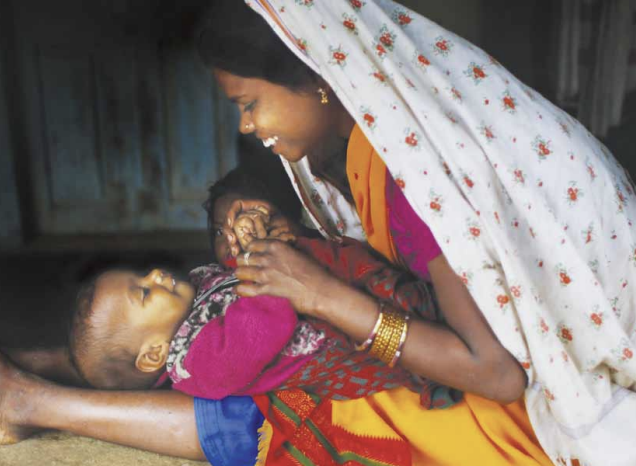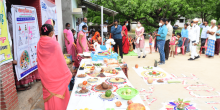Delivering essential nutrition interventions to women in tribal pockets in India: A Study from Odisha, Chhattisgarh and Jharkhand

The adequacy of women’s nutrition in preconception, pregnancy and post-pregnancy is central to their children’s survival and nutritional status. In India, 47 per cent of adolescent girls aged 15 to 19 years who are or will soon be mothers and 38 per cent of women aged 20 to 29 years have a Body Mass Index (BMI) below 18.5kg/m2, indicating undernutrition.
Maternal chronic energy deficiency and anaemia have been linked to morbidity and mortality of both mother and child. India's tribal peoples are the most deprived group – socially and nutritionally. Despite provisions for tribal development, disaggregated analyses show that 47 per cent of tribal women are undernourished compared to 29 per cent of women not belonging to a tribal background.
A nine-month study in three study states – Chhattisgarh, Jharkhand and Odisha – was carried out between December 2013 and August 2014. These states house 80 percent of India’s tribal population. Recent population-based surveys were studied to understand the nutritional status of women in these states.
The qualitative investigation on enablers and barriers for improving coverage of nutrition interventions was based on 977 interviews and 120 focus group discussions with adolescent girls, women in the reproductive age group, field workers and government representatives as well as a review of active government schemes.
Large-scale surveys and routine monitoring are currently deficient in measuring the nutritional status of women. All centrally sponsored government schemes are implemented in the study states but over half of women residing in tribal pockets in these states are not reached at critical times, such as during early pregnancy, through the existing platforms.
States with better reach of essential nutrition interventions have government-led fully functional tribal development agencies/ departments and organized involvement of community members and field workers in service delivery.
All national schemes should be reviewed with a tribal lens to ensure these populations receive the entitled services. Proven measures, such as strengthening tribal development nodal agencies, motivational incentives to field workers and organized community involvement, need to be scaled up.


